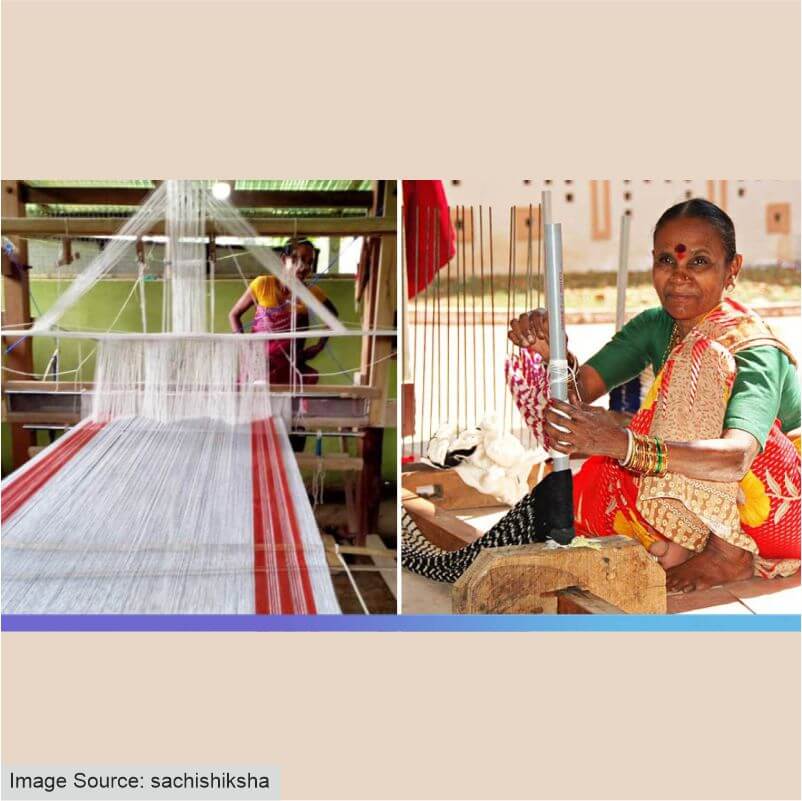National Handloom Day is celebrated on August 7 every year to remember the launch of the Swadeshi Movement in 1905. The movement strongly encouraged indigenous industries and the spirit of Swadeshi, which included handloom weavers.
Handloom weaving is more than just a traditional craft; it's a testament to rural communities' rich cultural heritage and artistic prowess. This age-old practice has been a vital part of many societies for centuries, providing a means of livelihood and a sense of identity and pride. In recent years, the significance of handloom in empowering artisans and boosting rural economies has garnered much attention, as it holds the potential to drive sustainable development and the economy.
The Heritage of Handloom
Handloom weaving is deeply embedded in the cultural fabric of many rural regions, particularly in countries like India, Bangladesh, and various African nations. Each piece of handloom textile carries the legacy of the artisans' ancestors, showcasing intricate designs, patterns, and techniques passed down through generations. This tradition reflects the diverse cultural narratives of these communities, preserving their unique artistic expressions.
Economic Impact on Rural Communities
- Employment Generation: Handloom weaving is a labour-intensive activity that creates substantial employment opportunities in rural areas. Artisans, often working from their homes or small workshops, engage in various stages of the production process, including spinning, dyeing, weaving, and finishing. This sector employs millions, especially women, who constitute a significant portion of the workforce.
- Income Generation: By selling their handcrafted textiles, artisans earn a stable income that supports their families and improves their standard of living. The demand for handloom products, both domestically and internationally, ensures a steady market for these goods, contributing to the financial stability of rural households.
- Skill Development: Handloom weaving requires a high level of skill and craftsmanship. Through continuous practice and training, artisans enhance their expertise, making them valuable assets to the industry. Skill development initiatives and training programmes further empower artisans, enabling them to produce high-quality products and innovate in their craft.
Socio-Cultural Significance
- Preservation of Heritage: Handloom weaving helps preserve the cultural heritage of rural communities. Each region boasts distinct styles and techniques, reflecting its historical and cultural identity. By promoting and supporting handloom, we contribute to the preservation of these invaluable traditions.
- Women Empowerment: The handloom sector is predominantly female-driven, offering women a source of income and financial independence. This empowerment extends beyond economic benefits, as women artisans gain confidence, social recognition, and decision-making power within their families and communities.
- Community Bonding: The collective nature of handloom weaving fosters strong community bonds. Artisans often work together, sharing knowledge and resources, which strengthens social cohesion and solidarity. This sense of community is essential for the overall well-being and development of rural areas.

Challenges and Opportunities
Despite its numerous benefits, the handloom sector faces several challenges that need to be addressed:
- Modernisation artists often struggle to access wider markets due to limited marketing and distribution channels. Expanding market access through e-commerce platforms, fairs, and exhibitions can significantly boost their sales and income.
- Modernisation and Competition: The rise of mechanised textile production poses a threat to the handloom industry. To remain competitive, artisans need support in modernising their tools and techniques while preserving the essence of their craft.
- Sustainable Practices: Promoting sustainable and eco-friendly practices in handloom production is crucial. Encouraging the use of natural dyes, organic materials, and environmentally conscious methods can attract environmentally aware consumers and enhance the marketability of handloom products.
Government and NGO Initiatives
Governments and non-governmental organisations (NGOs) play a pivotal role in supporting the handloom sector.
- Financial Assistance: Providing financial aid, subsidies, and low-interest loans to artisans can help them invest in better tools and materials, enhancing their productivity and product quality.
- Training and Skill Development: Organising workshops and training programmes to improve artisans' skills and knowledge of modern techniques can empower them to innovate and diversify their product range.
- Market Linkages: Facilitating direct market linkages through partnerships with retailers, fashion designers, and online platforms can expand the reach of handloom products and create a sustainable demand.
Child Help Foundation (CHF) supports these initiatives through its skill training programme, where individuals are taught various skills such as making sweets, lanterns, tailoring, etc. By providing these opportunities, CHF helps to diversify the economic activities of rural communities, ensuring a broader base of income sources and enhancing the overall economic resilience of these areas.
